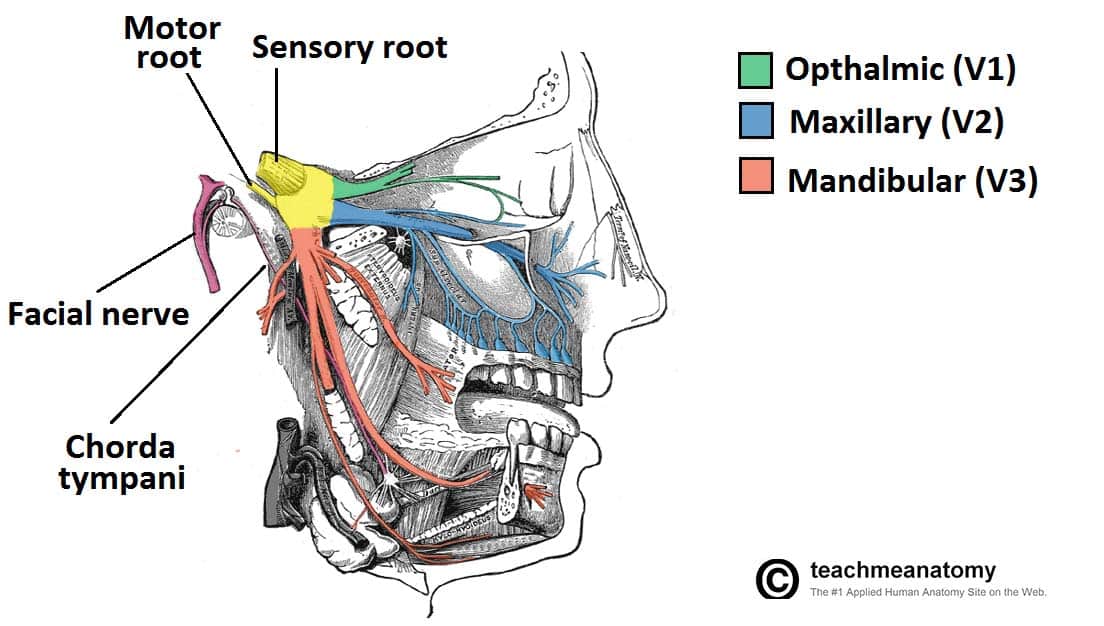branches of v2
The maxillary nerve, also known as V2, is the second division of the trigeminal nerve (cranial nerve V) and plays a vital role in providing sensory innervation to various regions in the upper face, including the mid-facial area, nasal cavity, and upper part of the oral cavity. Here are the main branches of the maxillary nerve:
-
Zygomatic Nerve: This branch further subdivides into:
- Zygomaticofacial Nerve: Provides sensation to the skin of the cheek.
- Zygomaticotemporal Nerve: Supplies sensation to the skin over the temporal region of the skull.
-
Infraorbital Nerve: This is a significant branch that exits the skull via the infraorbital foramen. It provides sensory innervation to the lower eyelid, upper lip, and part of the nasal cavity.
-
Superior Alveolar Nerves: These include:
- Anterior Superior Alveolar Nerve: Supplies the maxillary incisors and canine teeth.
- Middle Superior Alveolar Nerve: Supplies the maxillary premolars.
- Posterior Superior Alveolar Nerve: Supplies the maxillary molars and the maxillary sinus.
-
Palatine Nerves: These branches include:
- Greater Palatine Nerve: Supplies sensation to the hard palate.
- Lesser Palatine Nerve: Supplies sensation to the soft palate and tonsil region.
-
Pharyngeal Nerve: This nerve provides sensory innervation to the pharyngeal mucosa.
-
Posterior Superior Nasal Nerves: These branches provide sensation to the nasal cavity.
For more detailed information on the anatomy and clinical significance of the maxillary nerve, you can refer to the following resources:
- Kenhub on the Maxillary Branch of the Trigeminal Nerve
- StatPearls Overview of Maxillary Nerve
- Wikipedia Page on Maxillary Nerve
- Dentalcare Course on V2 Maxillary Nerve
- Anatomy.app Encyclopedia on Maxillary Nerve
These branches are crucial for various sensory functions and have significant implications in dental and maxillofacial procedures.
Sources


Related Questions
Work fast from anywhere
Stay up to date and move work forward with BrutusAI on macOS/iOS/web & android. Download the app today.
